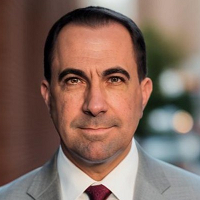 By Timothy Casey, Vice President, Foundation Risk Partners
By Timothy Casey, Vice President, Foundation Risk Partners
LinkedIn: Tim Casey
LinkedIn: Foundation Risk Partners
Healthcare leaders, here’s the hard truth: Cyberattacks are no longer a “what if”—they’re a when. In 2024 alone, more than 500 major breaches compromised millions of patient records. And while most organizations think they’re covered, the reality is far more dangerous: Many policies have gaps, vague language and outdated exclusions that won’t hold up when you need them most.
For CFOs and CEOs, this isn’t just a technical issue. It’s a board-level risk. And if you haven’t built a relationship with a cyber liability expert who understands your policy’s fine print, you may be leaving your organization catastrophically exposed.
You’re Signing Off. Do You Really Know What You’re Signing?
The strength of your coverage starts with the application. Before a carrier issues a policy, you’re attesting to the accuracy of your systems, controls and protocols. If what you disclose doesn’t match what investigators find post-breach, even unintentionally, your claim could be denied. In other words, you’re personally on the hook.
Most leaders don’t realize just how nuanced this gets. Your tech stack may have changed. New software may not be disclosed. Security protocols may not align with what’s written in the application. The smallest misrepresentation can void the policy entirely.
Standard Coverage Can’t Keep Up With Evolving Risk
Cyber threats are evolving faster than many policies can adapt. Here’s where traditional coverage often falls short:
- Outdated exclusions: Many policies weren’t written with AI-driven attacks, pixel tracking in patient-facing platforms or third-party SaaS vulnerabilities in mind
- Layered coverage structures: Stacked policies can look comprehensive but often fall short in a real-world breach, especially when coordination between carriers is unclear
- Misleading benchmarking: Organizations sometimes assume their coverage aligns with peers, only to learn that similar institutions have far more tailored and robust protections
Keeping pace with emerging risk requires more than a standard placement; it calls for precise insight into your organization’s specific vulnerabilities and a forward-looking approach to coverage.
Cyber Liability Requires Strategic Expertise
Cyber liability isn’t just a line item. It’s a complex, fast-moving risk that demands specialized attention. Without clear visibility into how your policy is structured or what it may exclude, you may face costly surprises when a breach happens, including delayed or denied claims.
This isn’t about chasing the cheapest quote. It’s about building a structure that can stand up to risk both today and tomorrow. Organizations that engage advisors with deep knowledge of healthcare cyber risk are better positioned to anticipate threats, close coverage gaps and make more strategic decisions.
Stop Assuming and Start Securing
Cyber liability coverage is more than a standard requirement; it’s essential to your overall risk management strategy. It’s not something you can leave to chance or assume your current coverage will hold up when it’s needed. Here’s what you can do to ensure a comprehensive and effective policy:
Schedule a Third-Party Review
Don’t rely on internal assumptions or a surface-level review. Bring in a cyber risk expert to analyze your policy before a breach reveals what you missed.
Scrutinize Exclusions and Endorsements
Does your policy account for AI-generated phishing attacks? Pixel tracking? Cloud migration risk? If not, your coverage might already be irrelevant. Cyber threats move fast, so your coverage must stay one step ahead. Review your policy regularly to ensure it protects you from tomorrow’s risks—not just today’s.
Benchmark Intelligently
How do your limits compare to similar-sized systems with similar exposures? Are you underinsured or overpaying for the wrong protections?
Understand Your Stack
If your policy layers across multiple carriers, are you confident it will respond as you think it will? Coverage fragmentation can cause delays, disputes or even denials when timing matters most.
The Cost of Getting It Wrong
One breach. One missed exclusion. One outdated disclosure. That’s all it takes to lose coverage when your organization is most vulnerable—financially, reputationally and operationally.
Cyber liability insurance isn’t a set-it-and-forget-it policy. It’s a dynamic, high-stakes tool that needs to evolve with your risk. What’s covered here is only the beginning. The more clarity you bring to your coverage now, the less vulnerable you’ll be when a breach hits.
